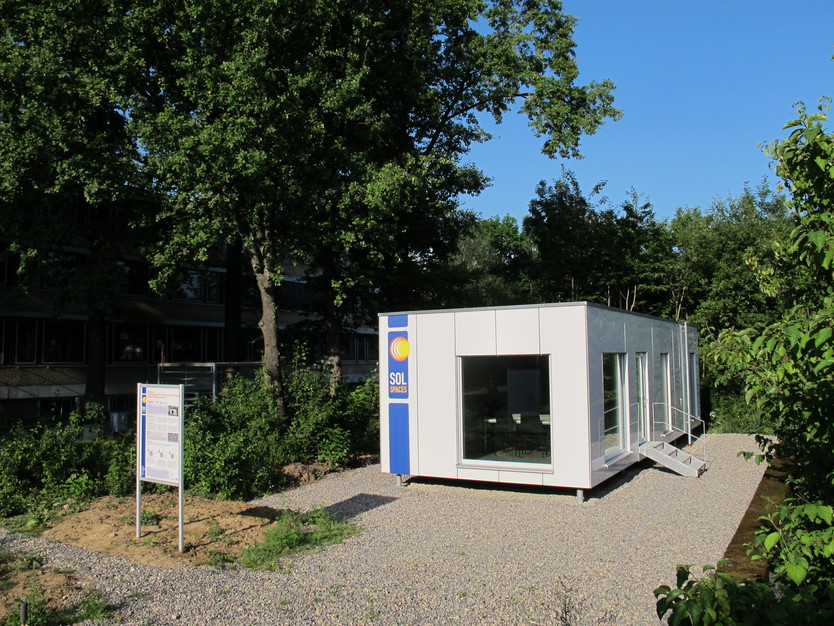
Front view of the Solspaces-research building on the campus of the University of Stuttgart
© IGTE, Uni Stuttgart
This innovative heating system developed as part of the SolSpaces project is primarily based on an evacuated tube air collector with 26 square metres of collector surface area and a heat exchanger for heat recovery. A 4.3 cubic metre sorption heat storage system is used to store solar heat for the heating period in winter: Unlike conventional hot water tanks, this long-term storage system is suitable for use in single-family homes thanks to its comparatively compact dimensions and low costs. That was shown by tests on a research building as part of SolSpaces.
In the follow-up project, SolSpaces 2.0, the heating system is to be optimised further and tested through multiple heating and regeneration phases. In particular, the desorption temperature is to be reduced from currently 180 degrees Celsius to approx. 130 degrees Celsius without adversely affecting the desorption result. Drying the upstream desorption air flow is to help achieve this modification. The lower temperature would permit the use of more cost-effective flat plate collectors and simplify the system’s hydraulic components.
As the system is to be suitable for a range of building types and climate zones, SolarSpaces 2.0 will prioritise development of technologies to protect against overheating in the summer: Upgrades to a sorptive cooling system are therefore to be tested, as is the use of switchable glass. Finally, the project partners – the Institute for Thermodynamics and Thermal Engineering at the University of Stuttgart & SchwörerHaus KG – will investigate options for combining the heating system with a PV system.


